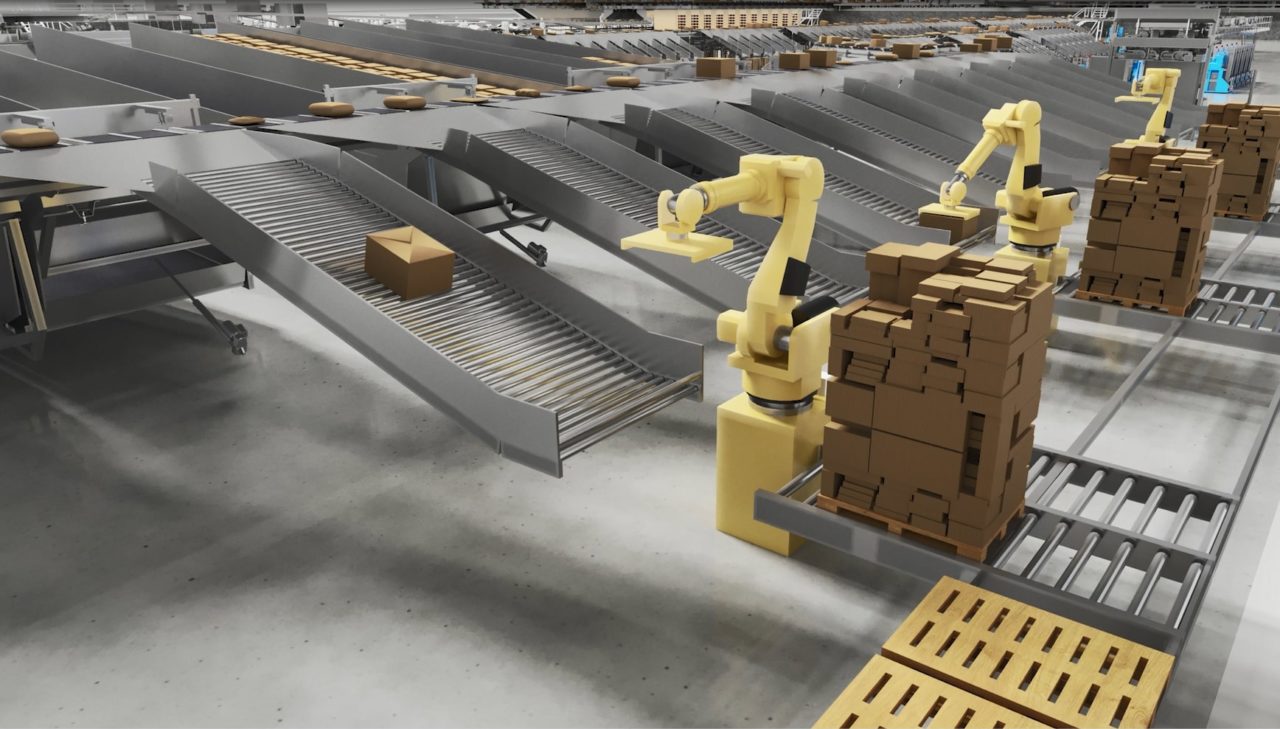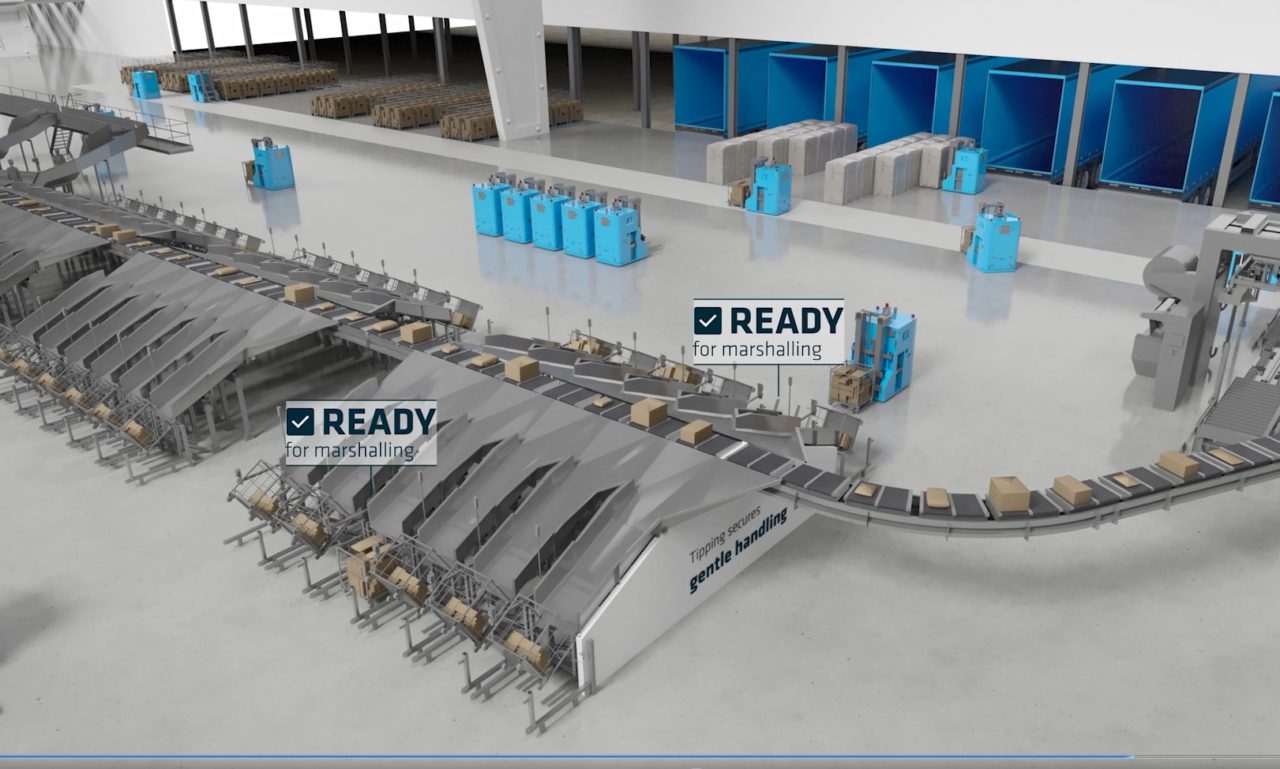Optimising distribution center automation technology to boost efficiency
A look at how any distribution centre can achieve scalable levels of automation that are affordable, flexible and provide long-term benefits.

By BEUMER Group
Distribution centre operations have become more complex and time-sensitive as a result of the explosion in ecommerce. Every operation needs to be handled with an eye toward sustainability, resilience and future-proofing.
Thus, modern centres require significantly higher levels of automation. Of course, that’s easy to say, but the term ‘automation’ encompasses anything from simple conveyor systems to cutting-edge artificial intelligence (AI).
Supply, fulfilment and return networks that are flexible, agile, and responsive to changing business conditions and consumer lifestyles and needs are necessary for success. Furthermore, these supply chains must be able to evolve to support the organisation’s future productivity, sustainability and profitability while responding to immediate needs.
Some businesses are already well along the path to automation, while others are rapidly reassessing their demands and accelerating their investments.
For some, the prospect of automation is frightening – it feels inflexible, risky, disruptive and unaffordable – in other words, completely out of their comfort zone.
In reality, any distribution centre can achieve scalable levels of automation that are affordable, flexible and provide long-term benefits. However, automation is not about adding tech for tech’s sake: it’s about investing in the right solutions now while ensuring flexibility for the future.

Investing in technology without first assessing a facility’s current and future business needs can result in questionable decisions and being stuck with solutions that don’t meet objectives. For example, less expensive investments often function well in the short-term but can’t handle future needs.
However, businesses that adopt a well-planned strategy can successfully navigate the automation jungle. Before thinking about specific technologies, operators should map out their processes and take a close look at what they need. Once systems are mapped, managers can then determine which parts of their processes should be automated based on their specific requirements.
In reality, even companies with a wealth of supply chain and logistics expertise are unlikely to have sufficient design and construction skills to implement the strategies and tactics that will allow them to effectively prepare for the future. However, centre managers can make the necessary analysis and put strategies in place to enhance both operations and profits by working with a knowledge partner who specialises in system design and automated procedures.
Working with a partner will help identify the opportunities and limitations of a proposed investment.
An experienced partner will help determine which processes the existing technology supports, where the gaps are, and what measures are needed to accomplish future goals and integrate with future technologies.
The growth of e-commerce has created a seismic shift in distribution centre operations. Previously, it had been possible to pick, pack and ship individual online orders quite easily, as they accounted for only a small percentage of sales. That strategy is no longer workable since ecommerce now surpasses 30 percent of sales in several retail industries. Furthermore, geopolitics and the rise of the ‘aware customer’ are also concerns for the modern centre. Nowadays, ethical, environmental, and other concerns are on par with cost and accessibility. Operations throughout the supply chain will need to adhere to high environmental and ethical standards.
There are numerous options available, ranging from simple conveyors to Autonomous Mobile Robots (AMRs), shuttles, carousels, and other automated storage/retrieval systems, picking robots, automated packing solutions, and container de-stuffing systems. Auxiliary systems, such as RFID, scanning, voice-directed picking, WMS and other IT are used to support human or automated activities.
The best strategy may be to combine manual, mechanised, and automated operations. Most systems have a number of features, some of which are more important to your business and products than others. Part of the selection process is to try to find this match. Here again, a knowledge partner can help by providing continuing support to optimise your system and create constant improvements, including the integration of future products and changes.

Some automation processes are long-term investments, while others are fast wins (although longer-term goals still need to be considered), and any adjustments must be gradual and supervised to ensure a fully functioning distribution centre.
One aspect that operators often overlook in their business cases is a budget for change. Both the solution adopted and current operation will affect ROI speed. A distribution centre investing in automation must recognise that change is unavoidable, and hence a budget must be in place for future change orders, system changes and modifications for even the best-designed system.
Furthermore, when comparing models, operators must consider operating costs. While in-house experts may be able to handle things like automated sorter failures, adding more technology, such as a large shuttle system with an associated conveyor network, may necessitate onsite maintenance support from the provider.
Automation increases productivity, reduces costs, improves stock accuracy, pick accuracy, space and asset usage, customer service and data visibility. But if the automation isn’t properly integrated, a fashion fulfilment centre might have to wait longer for its investments to pay off. Changing and tweaking complex systems is challenging, and bringing end-users into the project from the start is essential for successful application of most types of automation.
Projects can run into trouble due to unclear specifications, the wrong competencies and inadequate testing. Also, change and instability within the market make it hard for operators to know where to invest. A plan for post-implementation development of the automation itself and the methods in which the business interacts with the automation should also be in place. Fortunately, it is possible to take measures to prevent wasting its investments. By working with a system integrator, centres can make enhancements in a controlled environment, and if they conduct thorough analysis for future scenarios, they can better choose which solutions to invest in.